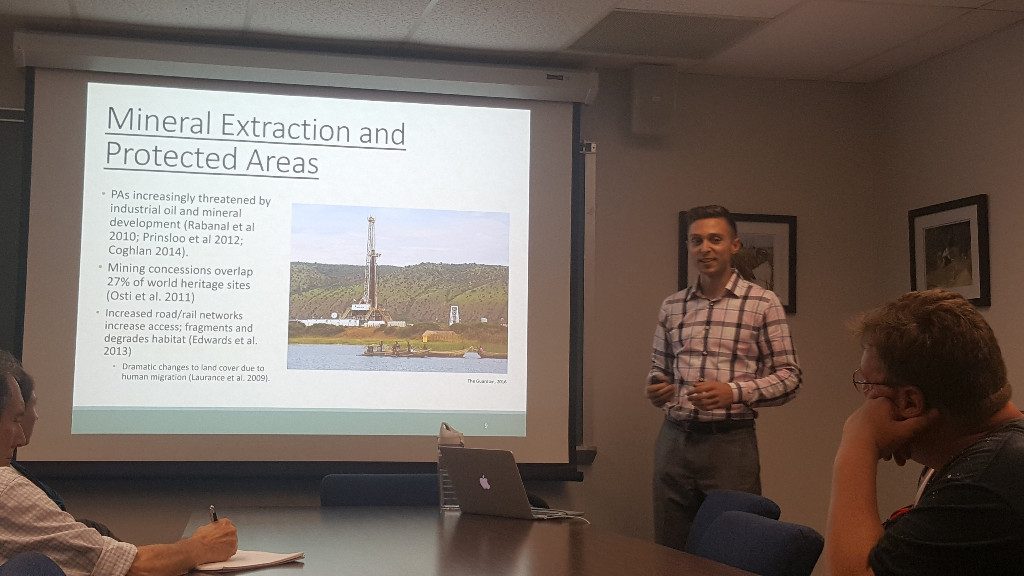On Thursday October 6th, Nick Dowhaniuk gave a NRM in Africa presentation titled “Industrial Oil Development, Human Population Growth, and Post-Conflict Regrowth in Conservation Landscapes.” Dowhaniuk is new to UF, pursuing a joint PhD in Medical Geography and Master of Health Science (MHS) in Environmental and Global Health: One Health. On Thursday he presented on research conducted for his M.A. degree in Natural Resources: Environmental Conservation from the University of New Hampshire.

In particular, Dowhaniuk investigates the relationship between the mineral extraction industry and protected landscapes in Uganda. Globally, there is a great deal of overlap between industrial oil and mineral development and protected areas. Dowhaniuk’s research focuses on the Albertine Rift Biodiversity Hotspot which faces the juxtaposition of high human population density, conflict, and biodiversity. Recently, commercially viable oil reserves were discovered in the Murchison Falls Conservation Area (MFCA) in 2006. There is also a history of conflict in the MFCA landscape, stemming from the 1986-2006 civil war in Uganda, which greatly changed the human settlement landscape. Using data measuring historical rural population density change, Landsat data to measure landscape level change, and interviews with residents of villages within 5 kilometers from the MFCA boundary, Dowhaniuk finds that districts impacted by the oil industry are facing unique challenges and social changes as compared to non-oil impacted districts, including population growth, significant changes in land cover classifications, and the influence of road development on land cover conversion.
Finally, Dowhaniuk’s research was recently featured in an August 2016 National Geographic article, “20 Under 30: The Next Generation of National Park Leaders”.